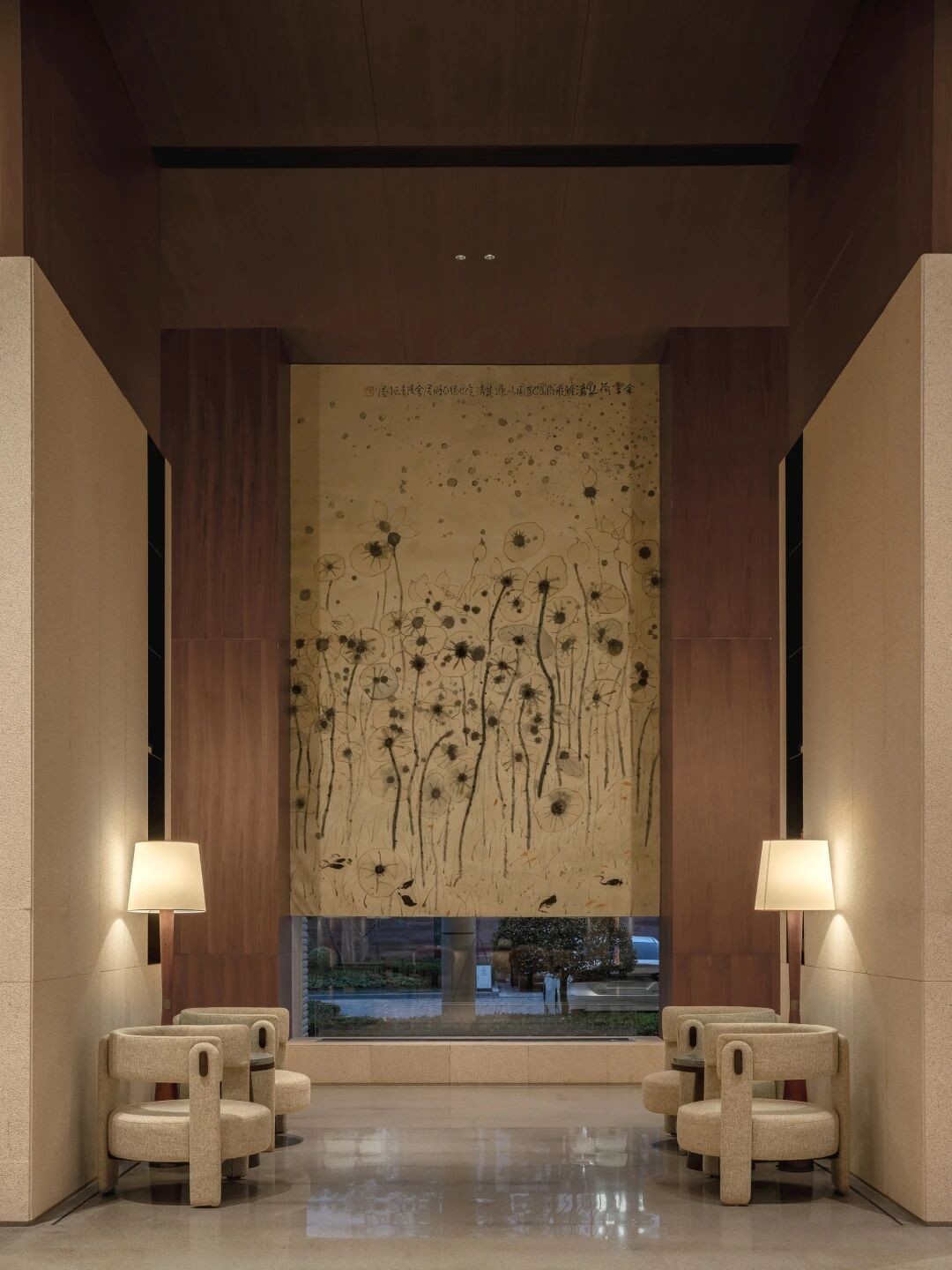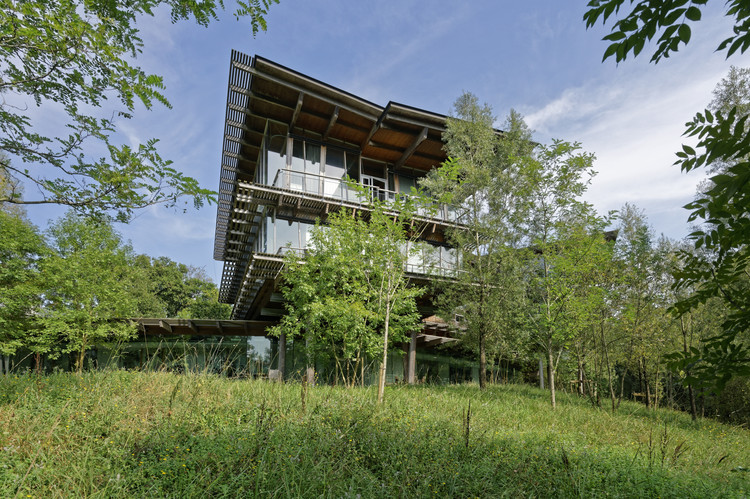The Lichen House Schwartz and Architecture
2017-12-31 13:00
© Richard Barnes
理查德·巴恩斯


地衣与其宿主之间的精确关系为专门为其站点量身定做的建筑提供了灵感-既是对它的回应,也是对其最佳属性的增强。丽琴宫与自然的机制是一致的,不是盲目地模仿它们,而是通过建筑来扩展我们对它们的理解和体验。
The precise relationship between lichen and its host provides inspiration for an architecture specifically tailored to its site ‐‐ both as a response to it and as an augmentation of its best attributes. The Lichen House works in concert with nature’s mechanisms, not to mimic them blindly, but to expand our understanding and experience of them through architecture.
© Richard Barnes
理查德·巴恩斯


Lichen家坐落在雾中,橡树落在加州索诺玛山谷上方的山上。该地点成熟的活橡树和沿海橡树的自由分枝支撑着披着褶皱的RamalinaLichen面纱,这种面纱可以过滤阳光,为宿主吸收水分和营养,并通过光合作用从空气中去除污染物。Lichen是一种超敏感生物,在恶劣或受污染的环境中退却或死亡,但在有利于生长的条件下迅速扩张其网。它是这个独特的小气候环境健康的领头羊。
The Lichen House nestles within the fog and oaks in the hills above California’s Sonoma Valley. The free‐ranging branches of the site’s mature live and coastal oak trees support veils of draping Ramalina Lichen that filter sunlight, capture moisture and nutrients for their hosts, and remove pollutants from the air through photosynthesis. A hypersensitive organism, Lichen retreats or dies in adverse or contaminated environments but quickly expands its net with conditions advantageous for growth. It is a bellwether for the environmental health of this unique microclimate.
© Richard Barnes
理查德·巴恩斯


从它的战略太阳方向和几何结构开始,丽臣宫的形式归功于被动的热策略-最大限度地利用日光和广阔的南面景观,由一个深的悬垂的树荫格子保护。起伏的金属翅片格架既是对周围地衣几何形状的正式引用,也是通过重新创建花边地衣网的滤过斑点光的空间参考。它过滤高夏天的太阳,并允许太阳在冬季获得热量时,太阳在天空中较低。
Beginning with its strategic solar orientation and geometry, the Lichen House owes its form to passive thermal tactics ‐ the maximization of daylight and expansive southern views protected by a deep overhanging shade trellis. The undulating metal fin trellis is both a formal reference to the surrounding lichen’s geometry as well as a spatial reference by recreating the filtered dappled light of the lace lichen’s net. It filters the high summer sun and allows solar heat gain in the winter when the sun is low in the sky.
Floor plan


立琴楼的概念和设计不可分割,它是一个多孔透气的建筑围护结构,接受、过滤和处理外部环境,就像启发设计的地衣一样。一个朝南的无条件走廊空间与一系列的可操作的窗户沿着私人的侧翼,作为一个间隙缓冲区。该区域保护睡眠区免受南方直接照射,在促进自然气流的同时抑制热量损失和热量增加-有效地减少了空调地板面积和房屋所需的加热/冷却负荷。
Integral to the concept and design of the Lichen House is a porous and breathable building envelope accepting, filtering, and processing external conditions much like the lichen that inspires the design. A south‐facing unconditioned hallway space with a series of operable windows along the private wing of the home serves as an interstitial buffer. This zone protects the sleeping quarters from direct southern exposure, dampening heat loss and heat gain while promoting natural airflow ‐ effectively minimizing the conditioned floor area and required heating/cooling loads of the house.
© Richard Barnes
理查德·巴恩斯


家的翅膀延伸到南部和西部的长而开阔的视野,自由地精确地拨号定位到景观中的焦点。然后,每个房间都仔细地调整到自己的空间“小气候”,考虑到隐私、视图、太阳方向、光线质量和气流。一系列花园和空地与房子内部的每一个区域协调工作。
The home’s wings extend toward long expansive views to the south and west with the freedom to precisely dial in orientation to focal points in the landscape. Each room is then carefully tuned to its own spatial “microclimate” considering, privacy, views, solar orientation, quality of light, and air flow. A series of gardens and open spaces work in concert with each zone of the house interior.
© Richard Barnes
理查德·巴恩斯
































































































Architects Schwartz and Architecture
Location Glen Ellen, United States
Lead Architects Neal Schwartz, Wyatt Arnold, Christopher Baile, Erik Bloom, Laura Huylebroeck
Area 3500.0 ft2
Project Year 2016
Photographs Richard Barnes
Category Houses
















.jpg)







